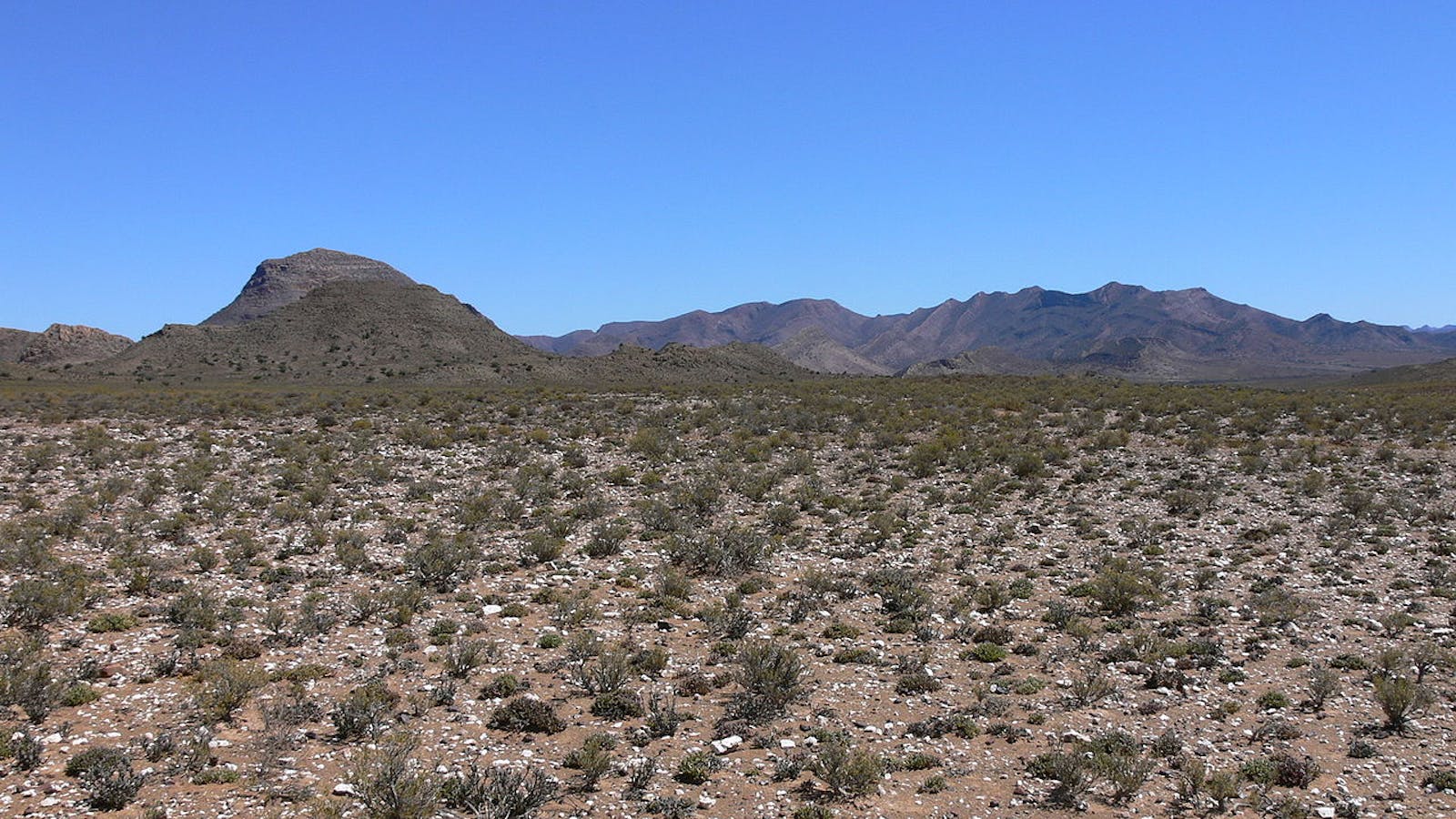Succulent Karoo Xeric Shrublands
The ecoregion’s land area is provided in units of 1,000 hectares. The protection goal is the Global Safety Net (GSN1) area for the given ecoregion. The protection level indicates the percentage of the GSN goal that is currently protected on a scale of 0-10.
Bioregion: South African Cape Shrublands & Mountain Forests (AT2)
Realm: Afrotropics
Ecoregion Size (1000 ha):
5,719
Ecoregion ID:
110
Conservation Target:
24%
Protection Level:
3
States: South Africa
The Succulent Karoo is the world’s only plant hotspot that is entirely arid and hosts the world’s richest succulent dwarf shrub vegetation. The major families contributing to this group are Mesembryanthemaceae, Crassulaceae, and Aloaceae. The explosive speciation of the Mesembryanthemaceae (Stone plants) gave rise to approximately 1,800 species and 120 genera. Many of the endemics are found along regions of weathered quartz, which create areas of white pebbles. This provides vital camouflage and moderates the temperature for the “stone plants.”

The flagship species of the Succulent Karoo Xeric Shrublands ecoregion is the monkey beetle.
The ecoregion comprises the major biogeographical domain of Southern Karoo. The climatic characteristics of the Succulent Karoo is distinctive from other deserts in the world. Rainfall is reliable and predictable, falling mostly in spring and autumn, with annual rainfall between 150 mm to 300 mm in most of the area. The ecoregion is not subject to fog. Maximum temperatures in summer frequently surpass 40°C.
There are only three perennial river systems in the Succulent Karoo, all of which have their source in wet mountain areas distant from the ecoregion. The perennial rivers are important in providing corridors of productivity dominated by trees that are derived from the distant savannas, such as Acacia karroo.
By far, the most distinctive feature of the Succulent Karoo is the diversity of succulents, especially dwarf and contracted leaf species. Another outstanding feature is the high diversity of geophytes or bulblike plants. Most of the geophyte species are petaloid monocots in the families Hyacinthaceae, Iridaceae, Amaryllidaceae, and Asphodelaceae. Despite the world-renowned displays of spring annuals, this plant group comprises a low proportion of the Succulent Karoo flora. Tree richness is poor, but this paucity is offset by the presence of charismatic near endemics such as bastard quiver tree, quiver tree, and halfmens. Levels of plant endemism are extremely high.
The Van Rhynsdorp Centre, a large expanse of coastal plain with the Knersvlakte as its hub, includes at least 150 endemic species, most of which are dwarf succulents and geophytes (with new species discovered regularly). In the Southern Karoo Domain, the Little Karoo is a distinct center of endemism, with between 200 and 300 endemic species. Mesembryanthemaceae comprise the majority of these endemics. The fauna of the ecoregion has a rich complement of endemics, especially among the arachnids, hopliniid beetles, aculeate Hymenoptera, and reptiles.
Monkey beetles, largely endemic to southern Africa, are concentrated in the Succulent Karoo and are important pollinators of the flora. The melittid bees include species of Rediviva, oil collectors that exclusively pollinate plant species of Nemesia and Diascia. Among the region’s reptiles, near endemics include the Richtersveld dwarf leaf-toed gecko and the Calvinia thick-toed gecko.
Large tracts of the ecoregion are still fairly intact in spite of general overgrazing. The Little Karoo has seen the most transformation by agriculture due to the proximity of perennial streams draining into the major basin. Given its global significance as a biodiversity hotspot and its long-standing recognition as a regional conservation priority, the number and coverage of reserves have been woefully inadequate.
The conservation situation has improved recently with the establishment of the Namaqua National Park and the initial phase of the Knersvlakte Nature Reserve. Other protected areas in this ecoregion include the Goegap Nature Reserve, Tankwa-Karoo National Park, and Gouritz Cluster Biosphere Reserve.
Much of the habitat has been severely degraded by over-grazing and desertification in communally-owned and privately owned rangelands, particularly due to extensive ostrich farming. The expansion of agriculture, especially in the valleys of perennial rivers, is also a significant threat to the ecoregion. The illegal and large-scale collection of succulents and geophytes is putting pressure on the plant populations. In addition, climate change is predicted to have significant negative impacts on the biodiversity of the Succulent Karoo, given the specialized habitat requirements of the numerous local and point plant endemics. In particular, dwarf endemics such as Conophytum may be especially vulnerable due to substantial range reductions predicted under climate change scenarios.
Priority conservation actions for the next decade
- Encourage best grazing practices and market products as being sustainable, for example, “green branding of ostrich products.”
- Expand the protected area corridor network.
- Rehabilitate rangelands, for example, by redistributing unused paddock manure to combat desertification.
-
-
1. Burgess, N., Hales, J.A., Underwood, E., Dinerstein, E., Olson, D., Itoua, I., Schipper, J., Ricketts, T. and Newman, K. 2004. Terrestrial ecoregions of Africa and Madagascar: a conservation assessment. Island Press.
2. CEPF. 2003. Ecosystem Profile: The Succulent Karoo Hotspot. Namibia and South Africa. [Online]. [Accessed 20 April 2018]. Available from: https://www.cepf.net/sites/default/files/final.succulentkaroo.ep_.pdf
3. Hanke, W., Wesuls, D., Münchberger, W. and Schmiedel, U. 2015. Tradeoffs in the Rehabilitation of a Succulent Karoo Rangeland. Land degradation & development. 26(8), pp.833-842.
4. Young, A.J., Guo, D., Desmet, P.G. and Midgley, G.F. 2016. Biodiversity and climate change: Risks to dwarf succulents in Southern Africa. Journal of Arid Environments. 129, pp.16-24. -
Cite this page: Succulent Karoo Xeric Shrublands. Ecoregion Snapshots: Descriptive Abstracts of the Terrestrial Ecoregions of the World, 2021. Developed by One Earth and RESOLVE. https://www.oneearth.org/ecoregions/succulent-karoo-xeric-shrublands/
-




